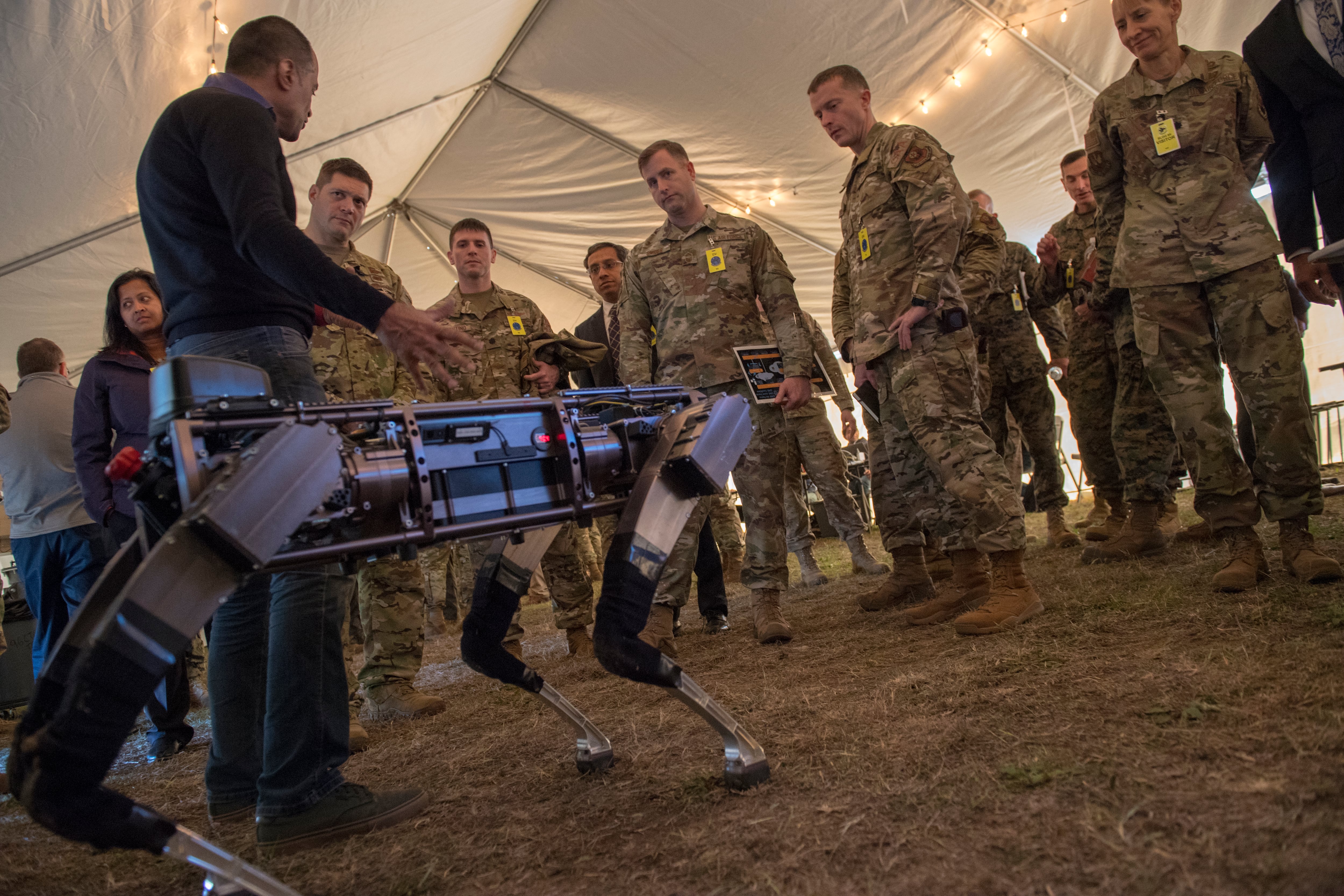WASHINGTON — The U.S. Army and Air Force signed a two-year collaboration agreement to develop a concept for joint all-domain operations, the services announced last week.
According to an Air Force news release, the services agreed to establish the “most basic” levels of what they are calling Combined Joint All-Domain Command and Control, or CJADC2, adding a "C" to the usual JADC2, the services’ effort to connect sensors to shooters.
The services agreed to develop mutual data-sharing standards and service interfacing by the end of fiscal 2022.
The effort will be led by Army Futures Command and the Air Force’s office of strategy, integration and requirements known as A5. The agreement was signed during a daylong meeting at the Pentagon on Sept. 29 between Air Force Chief of Staff Gen. Charles “CQ” Brown and Army Chief of Staff Gen. James McConville.
“The core challenges of the future fight are speed and scale,” Lt. Gen. Charles Flynn, Army deputy chief of staff, G-3/5/7, said in the news release. “The future fight will be much faster, and the joint force will have more sensors and more shooters. [It will] be more widely distributed than ever before.”
Both the Air Force and Army have separate, ongoing efforts to enable multidomain operations. The Air Force and the Space Force are developing the Advanced Battle Management System, the twice-tested system that the Air Force is using to connect sensors to shooters and to shorten the kill chain.
Meanwhile, the Army is modernizing its network in two-year increments with an eye on delivering tools that will enable JADC2. The Army recently tested network tools at a weeklong experiment, called Project Convergence, at Yuma Proving Ground in Arizona.
At the event, the Army demonstrated significant improvements in speeding up data transfers across domains using artificial intelligence, software and autonomous systems. Leadership at the experiment told reporters that the technology reduced the sensor-to-shooter timeline from 20 minutes to 20 seconds.
McConville said that the agreement with the Air Force was “very, very important.”
“We will have all sensors, the right shooter, and the right command and control coming together to give us the speed and the depth in the battlefield that we’ve never had before,” McConville said Oct. 1 at the Army Fires Conference.
Critical to the Army’s contribution to JADC2 will be its new Multi-Domain Task Force because of its ability to provide long-range precision effects, as well as intelligence, information and cyber capabilities, McConville said.
“We’re going to have the capability for long-range precision fires at ranges that we’ve never even considered before,” he added. “And this will give us a cross-domain capability to work with the joint force and coalition partners, and give us capabilities that are really going to make a difference.”
The agreement will also affect the joint forces' training, exercises and demonstrations, the release said.
The Navy and Air Force announced a handshake agreement on JADC2 development late last year.
“Each branch, including the newly-formed Space Force, must learn to interface with each other and successfully access data, reconnaissance and intelligence collected from across joint networks,” the release stated.
Andrew Eversden covers all things defense technology for C4ISRNET. He previously reported on federal IT and cybersecurity for Federal Times and Fifth Domain, and worked as a congressional reporting fellow for the Texas Tribune. He was also a Washington intern for the Durango Herald. Andrew is a graduate of American University.








